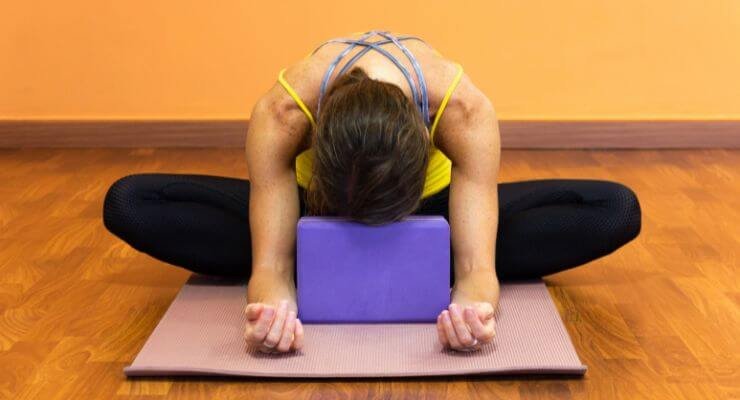Hot Yoga is a practice which involves practicing yoga in a heated room, typically between 90 and 105 degrees Fahrenheit, with a humidity level of 40%. The heat and humidity are intended to increase flexibility, improve cardiovascular health, and promote relaxation.
Hot yoga can refer to a variety of yoga styles, including Bikram, Moksha, and hot Vinyasa. Bikram yoga involves a specific sequence of 26 poses and two breathing exercises, while Moksha and hot Vinyasa are more flexible in their sequencing. Despite their differences, all styles of hot yoga share the common element of practicing in a heated room.
While hot yoga can offer many benefits, it is important to approach the practice with caution. Practitioners should stay hydrated and take breaks as needed, and those with certain health conditions, such as heart disease or low blood pressure, should consult with a doctor before trying hot yoga. Overall, hot yoga is a challenging and rewarding form of exercise that can provide physical and mental benefits for those who practice it safely and mindfully.
Origins of Hot Yoga
Hot yoga is a form of yoga that is practiced in a heated room. The practice is believed to have originated in the 1970s with Bikram Choudhury, a yoga teacher from India who moved to the United States. Choudhury developed a sequence of 26 postures and two breathing exercises that were designed to be performed in a heated room. This sequence is now known as Bikram yoga.
The original purpose of the hot temperature and humidity in hot yoga was to replicate the hot temperature in India, where traditional yoga may have originated. The yoga postures are believed to be more effective in a heated room because the heat allows the muscles to stretch more easily, making it easier to achieve deeper stretches and poses.
While Bikram yoga is the most well-known form of hot yoga, there are now many different styles of hot yoga, each with its own sequence of postures and breathing exercises. Some of the most popular styles of hot yoga include Vinyasa, Power, and Yin.
Hot yoga has become increasingly popular in recent years, with many people turning to the practice as a way to improve their physical and mental health. While there is some debate about the benefits of hot yoga, many practitioners believe that the heat and humidity of the practice can help to detoxify the body, improve flexibility, and reduce stress.
The Science Behind Hot Yoga
Hot yoga is a form of yoga that is practiced in a heated room, typically ranging from 90 to 105 degrees Fahrenheit. The heat is said to provide a more intense workout, leading to increased flexibility, strength, and stress reduction. But what does science say about the benefits and safety of hot yoga?
How heat affects the body during exercise
When the body is exposed to heat, it responds by increasing blood flow to the skin to help cool down. This can lead to increased heart rate, sweating, and dehydration. In hot yoga, the heat can also lead to increased muscle flexibility, allowing for deeper stretches and poses.
However, it is important to note that excessive heat can also be dangerous. Heat exhaustion and heat stroke are serious conditions that can occur when the body is unable to cool down properly. It is important to stay hydrated and take breaks as needed during hot yoga classes.
Benefits and challenges of practicing in a heated room
Studies have shown that hot yoga can provide similar benefits to traditional yoga, such as improved flexibility, strength, and stress reduction. Additionally, some studies suggest that hot yoga may provide additional benefits, such as improved cardiovascular health and increased calorie burn.
However, practicing in a heated room can also present challenges. The heat can be uncomfortable and may lead to dehydration or overheating. It is important to listen to your body and take breaks as needed during hot yoga classes.
Safety considerations and precautions
Before starting a hot yoga practice, it is important to consult with a healthcare provider, especially if you have any underlying health conditions. It is also important to stay hydrated and take breaks as needed during hot yoga classes.
Additionally, it is important to practice hot yoga in a safe and controlled environment. Make sure the room is properly ventilated and that the heat source is safe and regulated. It is also important to listen to your body and not push yourself too hard, especially if you are new to hot yoga or have any injuries.
Overall, hot yoga can provide a unique and intense workout experience, but it is important to approach it with caution and take appropriate safety precautions.
Preparing for a Hot Yoga Class
Hot yoga is a type of yoga that takes place in a heated room, typically around 105°F with a humidity of 40%. This type of yoga is known for its physical and mental benefits, but it is important to prepare properly to ensure a safe and enjoyable experience. Here are a few things to keep in mind when preparing for a hot yoga class.
What to wear and bring to a hot yoga session
When attending a hot yoga class, it is important to wear comfortable and breathable clothing. Tight-fitting clothes made of moisture-wicking material are ideal, as they help to keep the body cool and dry. Loose-fitting clothing can trap heat and moisture, making the experience uncomfortable.
In addition to comfortable clothing, it is also important to bring a few items to the class. A quality yoga mat is essential, as it provides a non-slip surface for poses and helps to prevent injuries. It is also recommended to bring a towel to wipe away sweat and a water bottle to stay hydrated.
Staying hydrated before and during class
Staying hydrated is crucial when practicing hot yoga, as the high temperature and humidity can cause the body to lose fluids quickly. It is recommended to drink plenty of water throughout the day leading up to the class, and to avoid caffeine and alcohol, which can dehydrate the body.
During the class, it is important to take breaks and drink water regularly. It is also recommended to sip on an electrolyte drink to replenish the body’s minerals and prevent cramping.
Nutrition and meal timing
Eating a heavy meal before a hot yoga class can make the experience uncomfortable, as the body will be working hard to digest the food in addition to practicing yoga. It is recommended to eat a light meal or snack at least 2-3 hours before the class to allow for proper digestion.
Some recommended pre-class snacks include a banana, a handful of almonds, or a small smoothie. It is also important to avoid foods that are high in sugar or processed, as they can cause a crash in energy levels during the class.
In conclusion, preparing for a hot yoga class involves wearing comfortable clothing, bringing essential items, staying hydrated, and being mindful of nutrition and meal timing. By following these tips, individuals can ensure a safe and enjoyable experience during their hot yoga practice.
Benefits of Hot Yoga
Hot yoga is known for its ability to provide numerous benefits to both physical and mental health. Here are some of the benefits of hot yoga:
Physical Health Benefits
Hot yoga can help improve flexibility by loosening muscles and increasing range of motion in the joints. It can also improve cardiovascular health by increasing heart rate and blood flow. Hot yoga may also aid in weight loss by burning calories and improving metabolism.
Additionally, hot yoga has been shown to help reduce chronic pain, particularly in the lower back. It can also improve balance and coordination, as well as strengthen muscles and bones.
Mental Health Benefits
Hot yoga can provide mental health benefits as well. It can help reduce stress and anxiety by promoting relaxation and mindfulness. Hot yoga may also improve mood and self-esteem, as well as promote better sleep.
Furthermore, hot yoga has been shown to have a positive impact on depression. It can help alleviate symptoms and improve overall well-being.
Overall, hot yoga can be a great way to improve both physical and mental health. However, it is important to practice hot yoga safely and correctly to avoid injury.
The Practice of Hot Yoga
Hot yoga is a type of yoga that is practiced in a warm and humid environment. The practice is usually done in a room that is heated to a temperature of between 80 and 100°F (27 and 38°C) with a lot of humidity. In this section, we will explore the environment and equipment used in hot yoga, as well as the typical class structure.
Environment and Equipment
The environment in which hot yoga is practiced is usually a heated studio with a temperature of between 80 and 100°F (27 and 38°C) and with a lot of humidity. The heat and humidity help to loosen muscles and promote sweating, which can help to detoxify the body.
To practice hot yoga, you will need some basic equipment. This includes a yoga mat, a towel, and appropriate clothing. It is important to wear light and breathable clothing that will allow you to move freely and will wick away sweat. You may also want to bring a water bottle to stay hydrated during the class.
Typical Class Structure
Hot yoga classes usually follow a similar structure, although the specific poses and sequence may vary depending on the style of yoga being practiced. A typical class will begin with a warm-up period, during which the teacher will lead the students through a series of gentle stretches and breathing exercises.
After the warm-up, the class will move on to more challenging poses, which may include standing poses, balancing poses, and inversions. The teacher will guide the students through each pose, providing instructions on proper alignment and breathing techniques.
Towards the end of the class, there will usually be a period of relaxation, during which the students will lie down on their mats and focus on their breath. This is a time for the body to cool down and for the mind to relax.
Overall, hot yoga is a challenging and rewarding practice that can offer a range of physical and mental benefits. By practicing in a warm and humid environment, students can deepen their practice and experience a more intense workout.
Risks and Precautions of Hot Yoga
Health Risks
While hot yoga can provide numerous benefits, it is not without its risks. Practicing in a heated environment can lead to dehydration, heat exhaustion, and even heat stroke. These conditions can cause symptoms such as dizziness, nausea, headache, and muscle cramps.
In addition, hot yoga can put a strain on the cardiovascular system, especially for those with pre-existing heart conditions. The increased heat and humidity can also exacerbate respiratory issues for some individuals.
Safety Measures
To minimize the risks associated with hot yoga, it is important to take certain precautions. First and foremost, individuals should stay hydrated before, during, and after class. It is recommended to drink at least 16-20 ounces of water 2-3 hours before class, and to bring a water bottle to sip on during breaks.
It is also important to listen to your body and take breaks as needed. If you experience any symptoms of dehydration or heat exhaustion, such as dizziness or nausea, stop and rest immediately.
Those with pre-existing health conditions should consult with their healthcare provider before starting a hot yoga practice. It may be necessary to modify or avoid certain poses that could be harmful.
Finally, it is important to choose a reputable studio with experienced instructors who prioritize safety and provide proper guidance throughout the class.
By following these safety measures, individuals can enjoy the benefits of hot yoga while minimizing the associated risks.
Hot Yoga for Weight Loss
The connection between hot yoga and weight management
Hot yoga has gained popularity as a form of exercise that can aid in weight loss. The high temperatures and humidity in the room can increase heart rate and metabolism, leading to increased calorie burn. However, it is important to note that hot yoga alone is not a magic solution for weight loss. It should be combined with a healthy diet and other forms of exercise for optimal results.
Burning calories and building lean muscle
Hot yoga can be an effective way to burn calories and build lean muscle. A 60-minute session of hot yoga can burn up to 500 calories, depending on the intensity of the practice. The heat and humidity can also increase flexibility and range of motion, allowing for deeper stretches and more challenging poses. This can lead to increased muscle tone and strength.
Realistic expectations and sustainable practices
It is important to have realistic expectations when it comes to weight loss through hot yoga. It is not a quick fix and results may take time to show. Sustainable practices such as a consistent yoga practice, healthy diet, and regular exercise can lead to long-term weight management and overall health.
Incorporating hot yoga into a weight loss routine can be a beneficial addition. However, it should not be relied on as the sole method for weight loss. A balanced approach that includes a healthy diet and other forms of exercise is key for sustainable weight management.
Hot Yoga and Mental Wellness
Hot yoga is a popular form of yoga that is performed in a heated environment. It is known for its physical benefits, but it can also have positive effects on mental wellness. Here are some ways hot yoga can benefit mental health:
Stress relief and improved mood
One of the most significant benefits of hot yoga is its ability to reduce stress and improve mood. The heat and physical intensity of the practice can help release tension and promote relaxation. Additionally, the focus on breath and movement can help quiet the mind and promote a sense of calm.
Mindfulness and relaxation in a heated environment
The heated environment of hot yoga can promote mindfulness and relaxation. The warmth can help relax muscles and increase blood flow, which can help release tension and promote relaxation. Additionally, the focus on breath and movement can help practitioners stay present in the moment and cultivate a sense of mindfulness.
Balancing the body and mind through hot yoga
Hot yoga can also be a powerful tool for balancing the body and mind. The practice can help increase flexibility, strength, and balance, which can lead to a greater sense of physical well-being. Additionally, the focus on breath and movement can help practitioners cultivate a greater sense of self-awareness, which can lead to a greater sense of emotional balance.
In summary, hot yoga can have a positive impact on mental wellness by promoting stress relief, mindfulness, and physical and emotional balance.
Conclusion
Hot yoga is a popular form of yoga that is practiced in a heated room. It is a challenging workout that offers a range of benefits, including stress reduction, improved strength, and flexibility. Hot yoga is suitable for people of all ages and fitness levels, but it is important to practice it safely to avoid injury.
The benefits of hot yoga are backed by science, with studies showing that it can help to reduce stress levels, improve cardiovascular health, and increase flexibility. However, it is important to note that hot yoga is not suitable for everyone, and it may not be the best choice for people with certain medical conditions.
To practice hot yoga safely, it is important to stay hydrated, wear appropriate clothing, and listen to your body. It is also important to practice under the guidance of a qualified instructor who can help you to modify poses to suit your individual needs and abilities.
In conclusion, hot yoga is a challenging and rewarding form of exercise that offers a range of physical and mental benefits. By practicing hot yoga safely and under the guidance of a qualified instructor, you can enjoy the many benefits of this popular form of yoga.
Frequently Asked Questions
What are the benefits of practicing hot yoga?
Hot yoga provides numerous benefits, including increased flexibility, improved cardiovascular health, and stress relief. The heat helps to loosen muscles and increase blood flow, allowing for a deeper stretch and more effective workout. Additionally, the sweating that occurs during hot yoga can help to detoxify the body.
What are some common hot yoga poses?
Some common hot yoga poses include the standing series, which includes poses such as Triangle, Warrior I, and Warrior II, as well as the floor series, which includes poses such as Camel, Rabbit, and Child’s Pose. Other popular poses include Downward Dog, Upward Dog, and Cobra.
How does hot yoga differ from regular yoga?
Hot yoga is similar to regular yoga in that it involves a series of poses and breathing exercises. However, hot yoga is practiced in a heated room, which can help to increase flexibility and provide a more intense workout. Additionally, the heat can help to promote sweating, which can aid in detoxification.
Is hot yoga safe for beginners?
Hot yoga can be safe for beginners, but it is important to approach it with caution. Individuals with certain health conditions, such as heart disease or high blood pressure, should consult with a healthcare provider before beginning a hot yoga practice. Additionally, beginners should start with a shorter class and gradually work their way up to longer sessions.
What should I wear to a hot yoga class?
It is recommended to wear lightweight, breathable clothing that allows for ease of movement. Many individuals choose to wear shorts and a tank top or sports bra. It is also important to bring a towel and water bottle to stay hydrated during class.
Who should avoid practicing hot yoga?
Individuals with certain health conditions, such as heart disease, high blood pressure, or respiratory issues, should avoid practicing hot yoga. Pregnant women and individuals with certain skin conditions, such as eczema, may also want to avoid hot yoga. It is important to consult with a healthcare provider before beginning a hot yoga practice.





